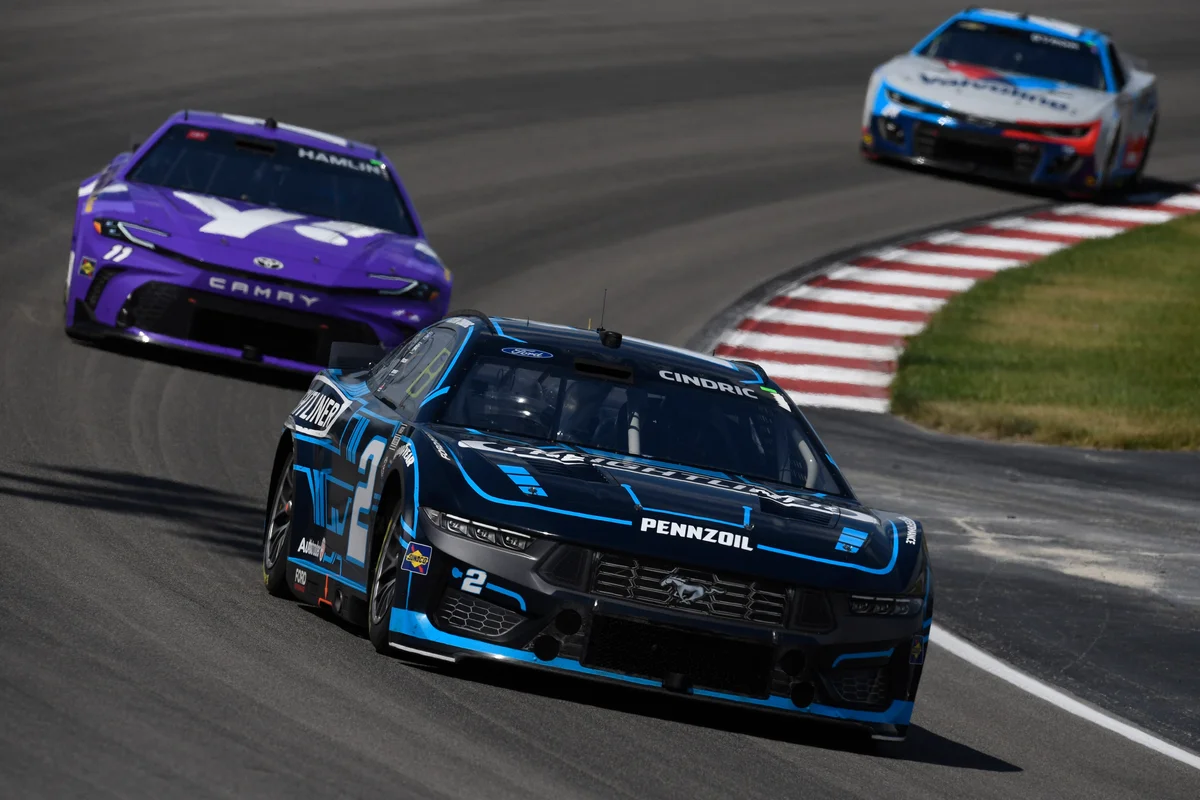The NASCAR Next Gen car, which launched with much anticipation in 2022, has become a point of contention among drivers and fans alike as mechanical concerns and performance issues continue to surface. Austin Cindric, after experiencing the Gen3 Supercar during his recent visit to Australia, voiced strong criticism of the current design, highlighting the shortcomings of the Austin Cindric NASCAR Next Gen model compared to its racing counterparts.
Cindric Draws Comparisons Between Supercar and Next Gen NASCAR
During his trip to Australia, Austin Cindric made his Repco Supercars Championship debut at the bp Adelaide Grand Final, driving a Tickford Racing wildcard Mustang. Before the event, he spent several test sessions at Sandown to familiarize himself with the Gen3 Supercar, which resulted in positive early impressions.
Reflecting on his initial Supercar experience, Cindric remarked,
“I think in a lot of ways, quite a bit of what I expected,”
Austin Cindric, V8 Sleuth. He further discussed his hands-on preparation for the competition and how getting behind the wheel allowed him to build on what he had learned ahead of his debut.
“It’s good to feel it out and kind of put everything that I’ve done prep work-wise, have a feel for it and really put some relevancy behind some of the questions that I may or may not have, work on some of the techniques,”
Austin Cindric, V8 Sleuth.
At this early stage, Cindric’s primary objective was to develop familiarity and confidence with the car, rather than focus only on lap time.
“I think I’m at that point where you’re trying to work out best practices. We don’t have lap times or a beacon, that’s not what today is all about, but I feel good. I feel like I have gotten up to speed well, I just probably need to continue to ramp up,”
Austin Cindric, V8 Sleuth.
Supercar’s Handling Outshines the Next Gen
After accumulating more laps and building rapport with the Gen3 Supercar, Cindric outlined the main differences between his usual NASCAR Next Gen Cup car and the Supercar. According to him, the Supercar’s design leads to a far superior driving experience.
“It drives a lot better. Well, it’s got more over-body downforce. Even just by looking at the car, it’s a lighter car, grippier tire, so all the things it does better,”
Austin Cindric, V8 Sleuth.
Cindric observed that the two vehicles handle tracks in very different ways. He noted that while both are engineered for high performance, the Supercar provides enhanced grip and allows drivers to navigate track features like kerbs with more aggression and confidence. This direct track interaction set the Supercar apart from the rigid response of the Next Gen car.
“It’s comparable but the current generation Cup car is a lot more rigid. Like, I’ve really had to talk myself into using the kerb as much as I can with this car. Yeah, it has a bigger effect on the driver but the car still says gripped up whereas if I hit some of these kerbs in a Cup car I’d be in the blue tent!”
Austin Cindric, V8 Sleuth.
Persistent Issues Lead to Frustration with NASCAR Model
The disappointment surrounding the NASCAR Next Gen car is not isolated to Austin Cindric alone, as various drivers and fans have echoed dissatisfaction during the 2023 NASCAR season. Cindric, in particular, noted that repeated races on some of NASCAR’s most notable circuits have yielded uninspiring results and highlighted the lack of adaptability and responsiveness in the current vehicle.
Despite incremental engineering adjustments introduced by NASCAR, many within the sport—including Cindric and other Cup Series drivers—remain unconvinced by the prospects for meaningful or swift reform. His commentary comes at a crucial juncture for the series, with the Repco event in Australia offering fresh context for evaluating North American stock car models against international benchmarks.
As Cindric continues to transition between championships and car platforms, his candid feedback on the Austin Cindric NASCAR Next Gen vehicle may influence further dialogue within the industry and encourage engineers and sanctioning bodies to revisit key design elements in pursuit of universally high-performing and driver-friendly machinery.
